Mapping pleasure
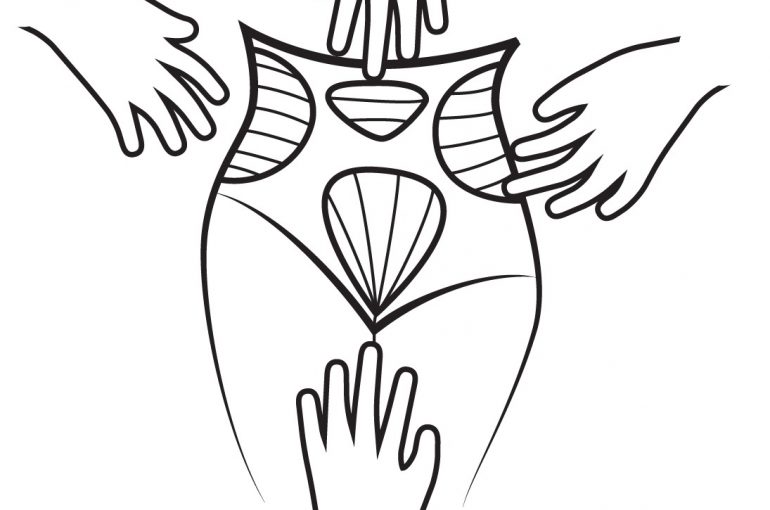
Lovewear is a smart underwear that helps people of all abilities to self-explore and enhance their own intimacy and sexuality. Pressure components are activated in the underwear when a connected pillow receive inputs through a hug. To better understand how pressure could be addressed and direct, we had to initially look into sex toys; we have been listing what in our perception is interesting because its functions and use. There is a big variety of products and we tried to map them, this is the result:
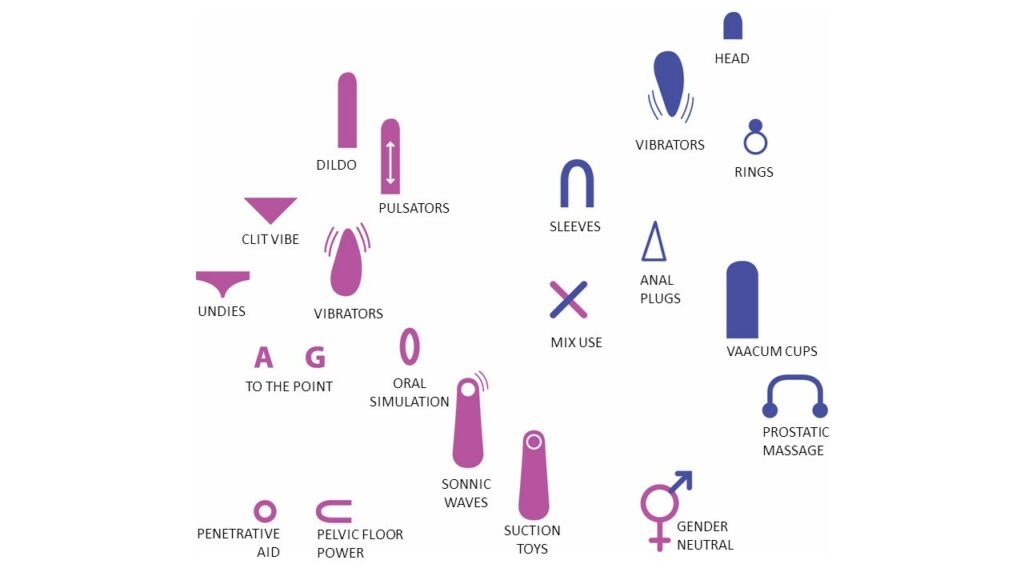
Our map is divided mainly in two parts: female and male sex toys as most of the brands and distributors refer to their products in this way, although many could be used for both or by both genders. There’s a trend about gender-neutral toys that could be used by both genders or more specifically transitioning bodies. Some products are mostly related to wellbeing and healthcare: products that ease penetration in case of painful sex or strengthen the pelvic floor.
Our attention for female products focused more on vibrators with external stimulation on clitoris and labia: Lelo Ora simulates oral sex through a mechanical movement that follows a variety of patterns and makes the most interesting interactions. Same brand has another product called Sona that creates deep stimulation through sonic waves. These products and considerations could support some direction and choices in our work.
On the male side of the map, we see as inspiring products the sleeves especially the Solo by Hot Octopus that works hands-free and especially without erection. Inflatable structures and findings on literature (dynamic inflatable shape-changing patterns) could be explored to develop some inserts or components that act in a similar way to Solo.
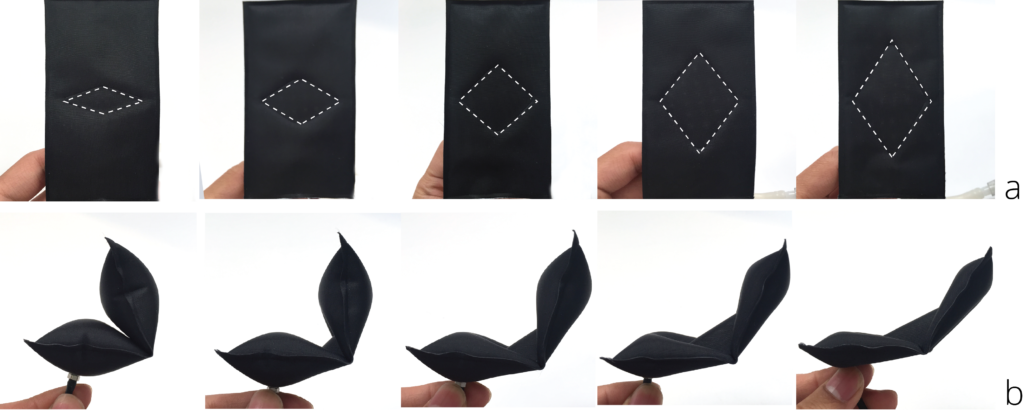
Generally, research on sex toys and their typologies was useful to understand what is possible to do in terms of interaction with genitals. Still we confirm as stated in the initial plan that our final product is not necessarily aiming at reaching the orgasm, but rather to inspire and make viable the exploration of someone intimacy without direct touch being involved while offering an option for human contact.
Note: we found out that there are vibrators to be clipped to undies and one could also work from remote through an app (We Vibe).
Besides the mapping, we are starting now to collaborate with Dr. Paola Tomasello psychologist and sexologist who is going to redact a report on the use of sex toys among disabled people. Dr Tomasello is a board member of Lovegiver and part of ‘the committee for sexual assistance to the disabled’, so she will support us with the distribution of the questionnaire and the testing of the product.
Obviously female and male versions of LOVEwear have different requirements. Within Re-FREAM we’ll develop the female version of the product, based on a modular platform that will facilitate further developments and will serve the sustainable porpoise too.
On another perspective, we are going through a research that explores all techniques that leads to woman’s pleasure. The research includes in-depth interviews with over 15,000 women and representative of the specifics women’s pleasure and touch, aged 18-95 in partnership with researchers at Indiana University School of Medicine, Indiana University’s School of Public Health and The Kinsey Institute; results are summarised on a website called omgyes.com which data are accessible under subscription.
The design has been refined from the initial proposal during two more iterations. The second one highlights the need for increasing the waistline volume to incorporate actuators. A belt-like stripe will accommodate pumps, manifolds, batteries, PCBs and main electronic components while the rest of the garment will be lighter. The inflatable elements tubing and connectors are going to be located on the light part of the wearable. Elements that need to be still considered carefully are the actual connectors. The overall design is thought to be modular in line with Eco-design principles to ease maintenance, repairs and replacement of failed elements. This will also impact on the chances to upgrade the product and customize it for specific functionalities. The edging of the various textile elements will provide space to locate tubing and electrical connections. These are further elements that will make the product easy to disassemble to wash separately and to maintain every single component.
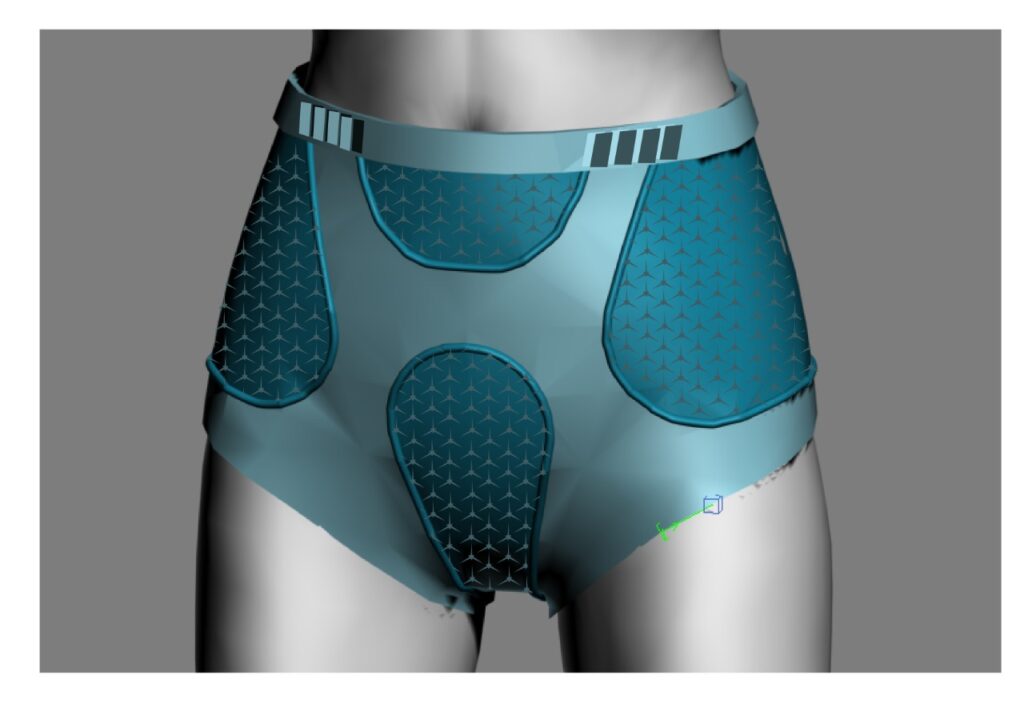
Manufacturing with high-frequency welding of patterns to generate stimuli and further interactions (reach sensible points, generate pressure, increase garment fit). The patterns are subdivided into sectors that should inflate and deflate independently to mimic the tactile experience. The prototypes are initially inflated with manual pumps. During the testing phase calculation of necessary airflow and pressure would indicate correct dimensioning of the chambers and ideal specification of miniaturized pumps.
The inflation sequence will contribute to generate a variety of effects that are recognized as pleasant and comfortable sensation. The pump and valve will work simultaneously to guaranty a continuous experience without interruptions or scattered sensation.
The design has been studied to accommodate a quantity of electronics and actuators. The design of the underwear consists of three distinct elements that are detachable for washing and maintenance purposes. The portion containing the main electronics is a sort of belt that surrounds the waist with a generous padded lining. Another portion is mainly textile and integrates air ducts with three functions, to distribute the air to the remaining actuators, to stimulate certain areas with a tactile like sensation and eventually to facilitate the wearability improving the fit of the garment. The last element is the main stimulator chamber, a shelled pad that embrace the vulva from the pubic mound to the perineum, here are contained further air pockets.
The co-creation was successful in the selection of the right thickness for the PU Sheets that eventually was in the range of 100 micron. We tried as a support experience not previously planned to generate some virtual simulation of the inflated elements but the tools currently available on the market and in the academic research are not relevant to our exploration. The commercial tools that we tested such as 3DSmax Cloth and Kangaroo are not physical simulation so they did not render information about the progressive inflation, friction generated on adherent surfaces. The academic tools screened during our literature search are mainly focusing on volumes to extract surfaces, none of them are able to generate simulation of flat surfaces being inflated.
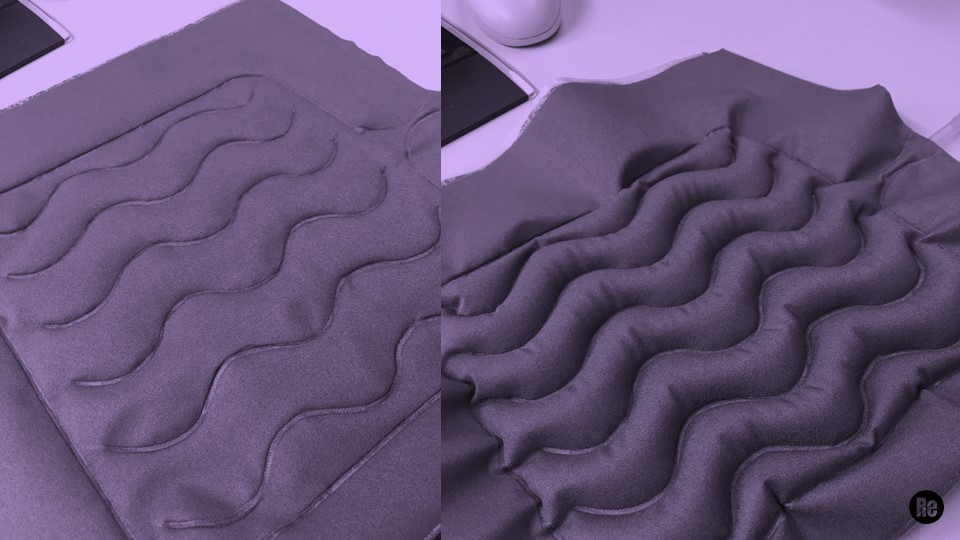
Looking forward to the next tests at Fraunhofer IZM with our collaborator Aesun!





